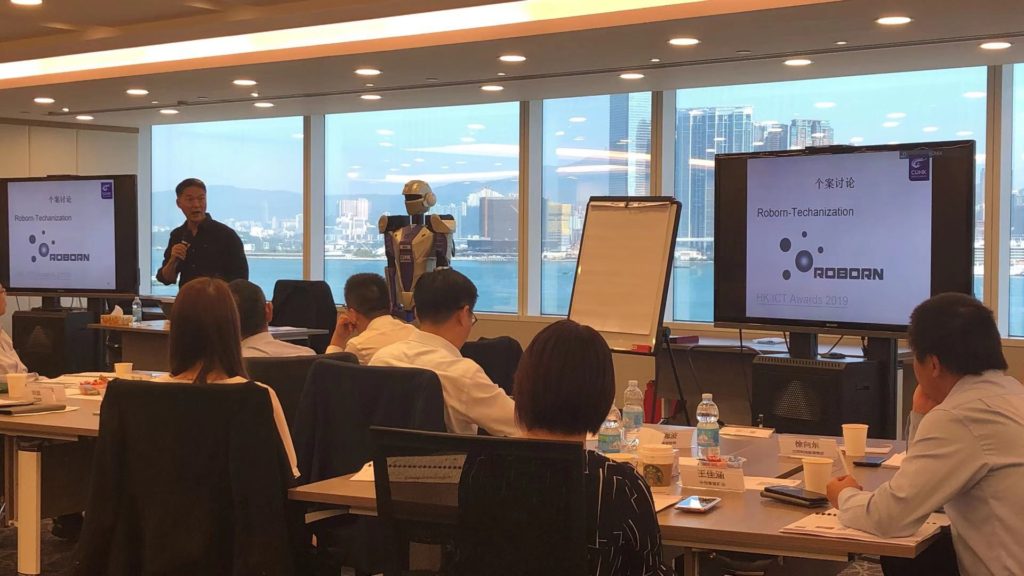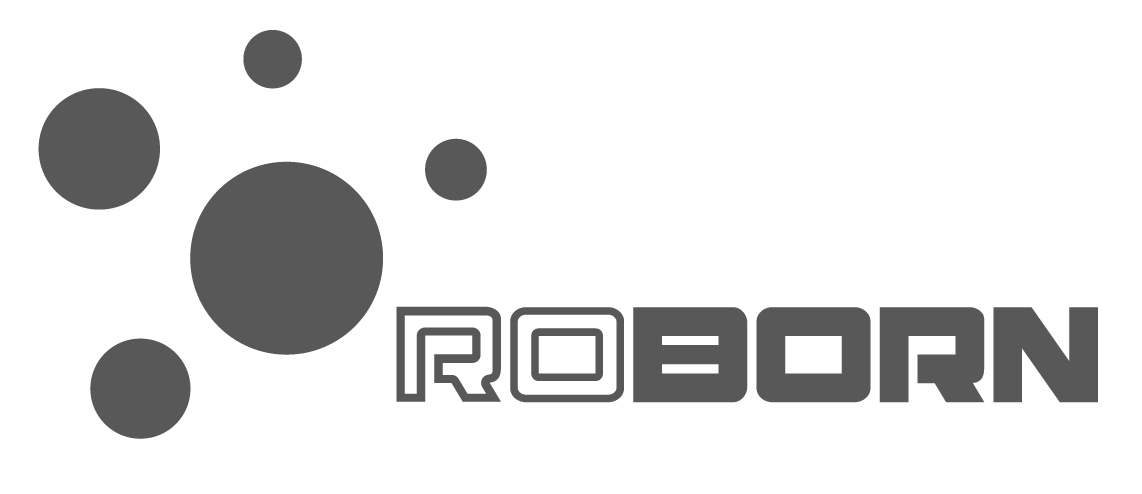Case Sharing 1
The Roborn team shared “Techanization” at Executive Development Program by The Asia-Pacific Institute of Business, The Chinese University of Hong Kong (CUHK-APIB)
Recently, The Asia-Pacific Institute of Business, the Chinese University of Hong Kong (CUHK-APIB) organized an Executive Development Program for a listed group company, among which the Creating Value and Brand Management session was scheduled on September 20th, 2019, with Professor Larry Poon from the Chinese University of Hong Kong as the training instructor.
At that training session, Professor Poon started with CUHK MBA Program rebranding its image and setting “Technology” of one of its four pillars, to bring up the concept of “Technization”. Mark Mak, co-founder of Roborn, was invited to demonstrate the company’s self-developed 5G motion control humanoid robot to inspire the senior executives there to discuss around Techanization. Mark is a CUHK alumni who graduated from the Chinese University of Hong Kong with MBA degree, reflecting the brand identity of CUHK MBA Program.
Roborn’s Techanization concept refers to integrating technology into an ecology and enable it to be more productive, efficient and sustainable for better human being, as a prosperous cycle. The technology application and integration will only make human being better and can bring many benefits to all aspects of human society, leading to the endless growth of the technology. Under Techanization, human being is willing to embrace the technology instead of worrying about any negative effect of it. Techanizaiton is completely different from the concept of mechanical automation; it is not the kind of standardized production operation replacing workers with machines, but to promote human-machine integration and virtual interaction. When building and managing a company’s brand, you can increase your core competencies through technology applications, but not to apply technology because of the technology itself. If the application of technology is not people-oriented, the company’s employees will not truly embrace it, and it will not increase the core competence of the company’s brand. Therefore, the Roborn team advocated the concept of Technization.
Shown at the site was a 5G motion control humanoid robot. Thanks to the high-tech equipment developed by Roborn, it makes synchronous control on robot by people wearing portable gear possbile. On the spot, the senior executives of the listed company saw the robot demonstrations by the Robron team and all were very excited and inspired to come up with new ideas of integrating AI, 5G, robotics and other technologies into each business unit, under concept of Techaniziton, such as robots and experienced technicians working together to improve production efficiency, dangerous high-altitude/temperature/pressure operations to be done by robots, robotic assembly application competition to promote STEM education, telemedicine in surgery operations, home care assistance, artificial intelligence of property management and butler services, front-line detection for big data collection and transmission to facilitate judgment and decision-making
Then, Professor Poon introduced to the executives the brand strategy framework:
- Choose the right market and target segment.
- Value Proposition for each target group
- Strategic assets and core competencies
- Strategies and projects in functional sectors
Professor Poon used Roborn as an example to illustrate the application of the brand strategy framework:
1) There are many different potential applications and markets for Roborn robots, however, due to limited recourses, the more than 20 creative application ideas raised by the senior executives cannot be realized at once. Therefore, Roborn must firstly choose the right market and target audience, decides where to compete to bring its technology superiority into full play. Considering great market potential in mainland China as well as numerous manufacturers in various industries and a large and rapidly growing middle-class market, Roborn chose to focus on the Greater China market;
2) The value proposition is a promise to the market. Roborn’s value proposition is through Techanization to realize human-machine cooperation, virtual and real interaction, to improve productivity and efficiency and make people live better;
3) Based on its value proposition, Roborn’s core competitiveness is its algorithmic ability that others can’t match to make precise positioning possible and drive the realization of artificial intelligence;
4) In terms of functional sector strategies, Roborn provides robotic product and algorithm system in accordance with its value proposition. Pricing, product, promotion, and distribution strategies all serve for the chosen market, value propositions, and strategic asset as well as core competencies.
One of the four pillars of brand image of the CUHK MBA Program is technology, which does not mean that students in this program is to learn technology, but is to inspire students with engineering background like Mark about how to commercialize technology and integrate the technology into industry ecology through Techanization to make human being better?
Roborn is a great example of applying the concept of Techanization.

